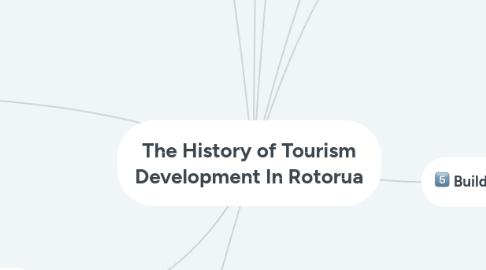The History of Tourism Development In Rotorua
by Aleisha Currie


1. Mass Tourism Development Phase
1.1. 1950s - First motels built (leading to concentrated development on Fenton St)
1.2. 1954 - Department of Tourism and Health resorts is renamed to: Tourist Publicity Department
1.3. 1962 - Introduction of jet aircraft leading to major tourism growth
1.4. 1963 - Maori Arts and Craft institute opened, Beginning of overseas campaign for Maori Tourism
1.5. 1964 - Airport opened nearby
1.6. 1967 - Rainbow Springs developed as a major attraction
1.7. 1971 - Growth of man made attractions
2. Small Companies emerge after establishment of larger ones
2.1. 1980's - small adventure companies established
2.2. 1985 - Skyline Skyrise Opens
2.3. 1988 - Boom period of international arrivals
3. Council Involvement
3.1. 1990's - Redevlopment of city centre, lake front, information centre and convention centre and establishment of backpacker accomodation
3.2. 1990 - Tourist and Publicity Department is renamed: NZ Tourism Board and Eco Tourism Developments
3.2.1. Rotorua Sustainable Tourism Charter created (Tourism Rotorua Initiative)
3.3. Late 1990's - Concentration of adventure market products near Agrodome
3.4. 1999 - NZ Tourism Board is renamed: Tourism New Zealand, First Global Campaign (100% Pure NZ) and growth of domestic market (events being created for economic development)
4. Tourism Based on Target Markets
4.1. 2001 - Spa Industry come back
4.2. 2003 - Clear shift from mass marketing to less visitors that spend more money
4.3. 2006 - Te Arawa Lake Settlements Act 2006 is passed
4.4. 2007 - Rotorua Energy Events Centre opens
4.5. 2008 - Government commits $72.1 million over 10 years to the Rotorua Lakes Protection and Restoration Plan, Rotorua airport runaway extension starts
4.6. 2009 - International flights in and out of Rotorua
4.7. 2011 - Stage 3 of Rotorua Museum Centennial Project is opened, Increase of cruise ship visitors and Mountain Bike Rotorua opens
4.8. 2012 - Rail Cruising in Mamuku Forest, Big Splash ride opened at Rainbow Springs and Rotorua canopy tours opens
4.9. 2013 - Famously Rotorua domestic tourism campaign launched, Volcanic Hills Winery opens and Pop up iSite is used at various expositions and trade shows
5. Pre-European
5.1. 1350 - Te Arawa Māori arrive in Maketu, Ihenga explores Rotorua area
5.2. 1830s - Traders and missionaries begin European Settlement
6. Beginnings of Tourism
6.1. 1839 - John Bidwill (first tourist) describes natural wonders of the region
6.2. 1840 - Missionaries settle, First accomodation, food and guides are established, area known as Thermal Wonderland
7. Tourism Based on Major Attractions
7.1. 1870s - Pink and White Terraces are the main attraction
7.2. 1873 - At least 4 hotels were existing
7.3. 1882 - First Government Spa (The Pavilion Baths)
7.4. 1886 - Tarawera Eruption and Pink and White Terraces buried
8. Diversification
8.1. 1887 - A need evolves to develop new attractions resulting in a shift in the focus of Rotorua tourism
8.1.1. Thermal Baths, Trout Fishing, Whakarewarewa, Waimangu, Boat Cruises
8.1.2. Rainbow Trout are Introduced into Lake Rotorua to cater for Trout Fishing
